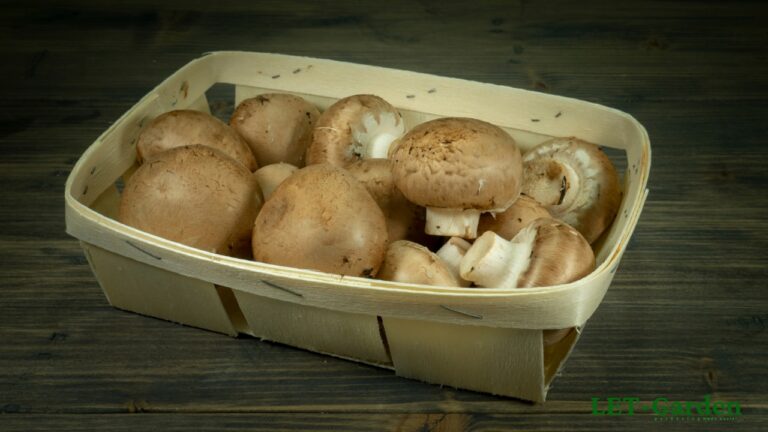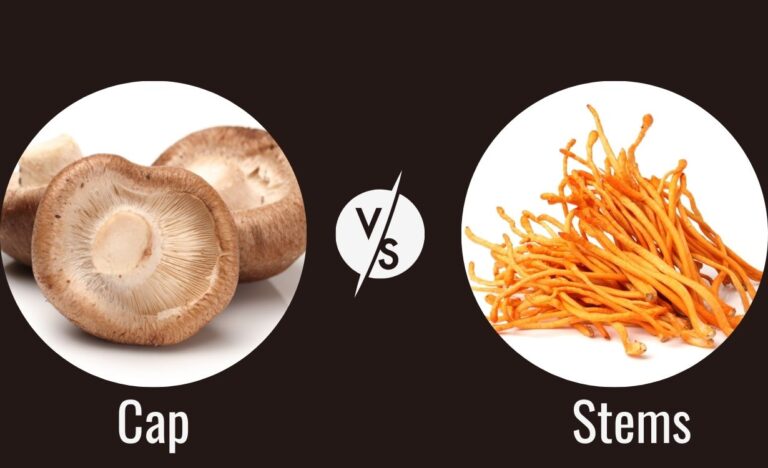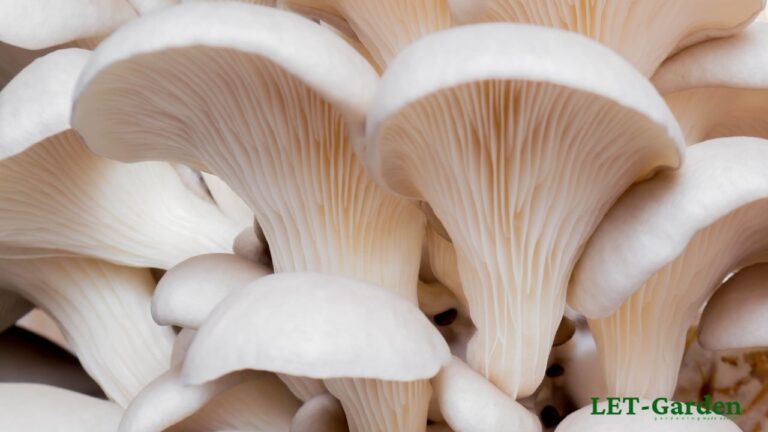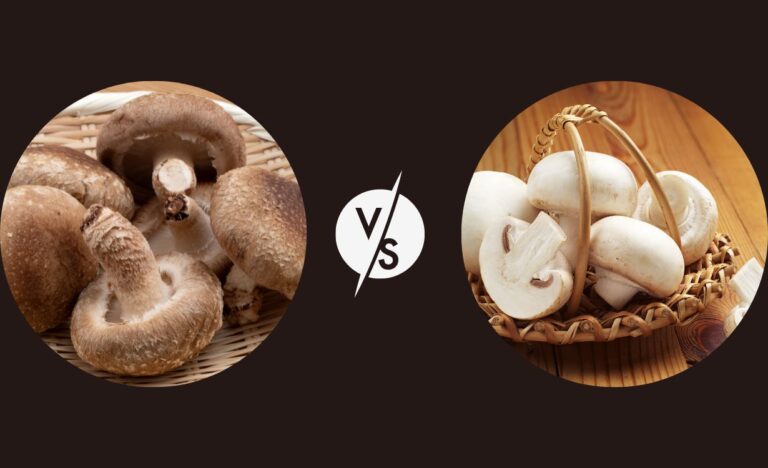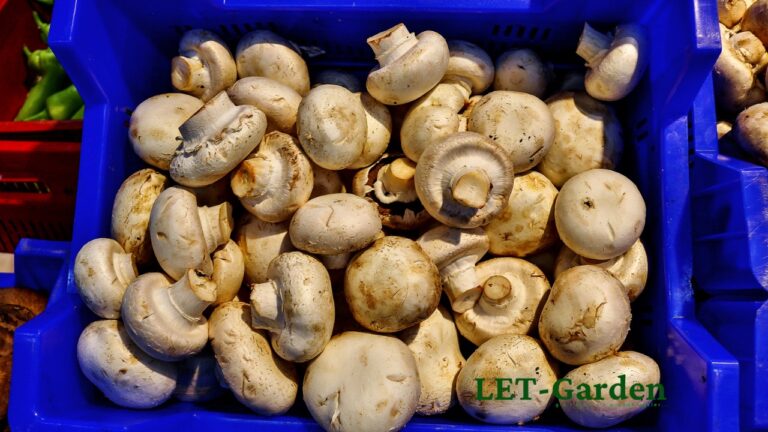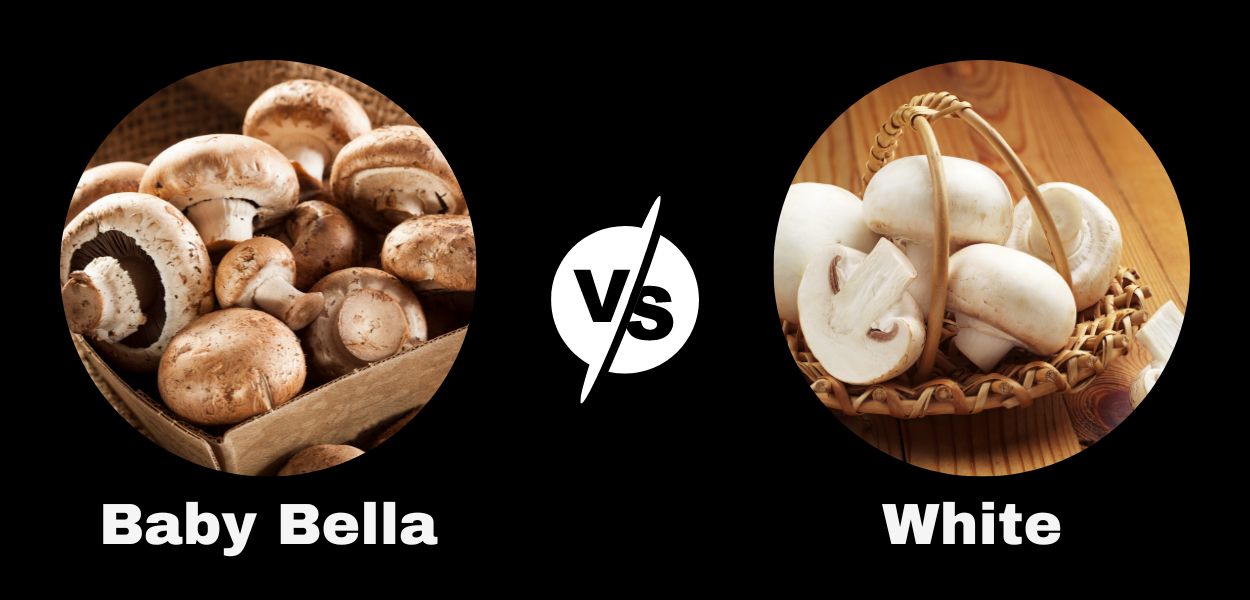
Mushrooms are a beloved ingredient in many cuisines around the world. With their unique flavor and texture, they can add depth and complexity to a wide range of dishes, from soups and stews to stir-fries and salads. But with so many varieties of mushrooms to choose from, it can be hard to know which one is best for a particular recipe or dish. In this post, we will focus on two popular types of mushrooms: baby bella vs white mushrooms.
While both of these mushrooms are widely available and frequently used in cooking, they have distinct differences in terms of their taste, texture, and nutritional content. We will delve into these differences and compare the health benefits of each type of mushroom. Whether you are a seasoned home cook or a beginner looking to experiment with different ingredients, this post will provide you with valuable insights into the differences between white mushrooms vs baby bella, helping you make informed decisions in the kitchen.
Exploring Baby Bella vs White Mushrooms
Baby Bella Mushrooms:

Baby bella mushrooms, also known as cremini mushrooms, are a popular variety of mushroom in the culinary world. They are a darker, more mature version of white button mushrooms and have a more robust flavor and meaty texture. Baby bellas are also more expensive than white mushrooms, but many people prefer their more complex flavor. They are classified as Agaricus bisporus, the same species as white button mushrooms, but are a different strain.
White Mushrooms:

White mushrooms, also known as button mushrooms, are a classic and versatile mushroom used in a variety of dishes. They have a mild flavor and are commonly used in salads, soups, and as a pizza topping. White mushrooms are classified as Agaricus bisporus and are the same species as baby bella mushrooms. The difference between the two lies in the strain – white mushrooms are the youngest and least mature strain of this species, which gives them their distinct appearance and mild flavor.
Overall, both baby bella and white mushrooms are excellent choices for cooking and offer unique flavor and texture profiles. While they may appear similar, they have different classifications and scientific names, which contribute to their differences in taste and appearance. Whether you are a fan of the meaty and robust flavor of baby bellas or the mild and versatile flavor of white mushrooms, both varieties are a delicious addition to any recipe.
Nutritional Comparison of White Mushroom vs Baby Bella
Mushrooms are low in calories, high in fiber, and packed with nutrients such as vitamin D, potassium, and selenium. Baby bella and white mushrooms are both highly nutritious, but they have slightly different nutritional profiles. In this section, we will provide an overview of the nutritional content and potential health benefits of white mushrooms vs baby bella nutrition, as well as a detailed comparison of the vitamins and minerals found in each type.
The Nutritional Benefits of Baby Bella Mushrooms, An Overview
Baby bella mushrooms, also known as cremini mushrooms, are a rich source of B vitamins, copper, and selenium. They are also a good source of protein and fiber. The following is an overview of the potential health benefits of consuming baby bella mushrooms:
- Boosts Immune System: Baby bella mushrooms contain beta-glucans, which are complex sugars that can stimulate the immune system and help the body fight off infections.
- Promotes Heart Health: The high potassium content in baby bella mushrooms can help lower blood pressure, which is beneficial for heart health.
- Supports Brain Function: The B vitamins found in baby bella mushrooms, such as riboflavin and niacin, are essential for brain health and cognitive function.
The Nutritional Benefits of White Mushrooms, An Overview
White mushrooms, also known as button mushrooms, are a good source of vitamin D, phosphorus, and copper. They are also low in calories and high in antioxidants. The following is an overview of the potential health benefits of consuming white mushrooms:
- Improves Bone Health: White mushrooms are an excellent source of vitamin D, which helps the body absorb calcium and promote bone health.
- Helps Maintain Blood Sugar Levels: The high fiber content in white mushrooms can help regulate blood sugar levels and prevent spikes in insulin.
- Boosts Immune System: White mushrooms contain polysaccharides, which can help strengthen the immune system and reduce inflammation in the body.
Nutrient Comparison: Baby Bella vs White Mushroom
In addition to the nutrients mentioned above, baby bella and white mushrooms contain a range of other vitamins and minerals. Here is a detailed comparison of the vitamins and minerals found in each type of mushroom:
- Baby Bella Mushrooms: Vitamin B2 (Riboflavin), Vitamin B3 (Niacin), Vitamin B5 (Pantothenic Acid), Copper, Selenium, Potassium, Phosphorus, Fiber, Protein
- White Mushrooms: Vitamin D, Vitamin B2 (Riboflavin), Vitamin B3 (Niacin), Vitamin B5 (Pantothenic Acid), Copper, Selenium, Potassium, Phosphorus, Fiber
Overall, both baby bella and white mushrooms are highly nutritious and offer a wide range of potential health benefits. Incorporating a variety of mushrooms into your diet is a great way to boost your overall health and enjoy the unique flavors and textures they have to offer.
Taste and Texture Comparison: White Mushrooms vs Baby Bella
When it comes to cooking with mushrooms, understanding their taste and texture is key to achieving the desired outcome of a dish. Baby bella and white mushrooms are two of the most popular types of mushrooms in the culinary world, but they have distinct differences in taste and texture.
Taste:
Baby bella mushrooms, also known as cremini mushrooms, have a slightly richer and earthier flavor compared to white mushrooms. They have a meatier and more robust taste, which makes them a great addition to meat-based dishes such as stews, soups, and pasta sauces. On the other hand, white mushrooms have a mild and subtle flavor that is often described as slightly sweet and nutty. They pair well with a variety of ingredients and are perfect for adding a delicate flavor to dishes like stir-fries and salads.
Texture:
When it comes to texture, baby bella mushrooms have a firmer and denser texture compared to white mushrooms. They hold their shape better when cooked, making them a good choice for sautéing, grilling, or roasting. White mushrooms, on the other hand, have a softer and more delicate texture. They have a tendency to release moisture when cooked, which can make them a good choice for dishes that require a softer texture, such as soups or sauces.
How Flavor Impact on Cooking and Meal Preparation
Knowing the taste and texture differences between baby bella and white mushrooms can help in meal preparation. If you want a more intense mushroom flavor, you can use baby bella mushrooms in your recipe. They also work well in dishes that require a heartier texture, such as pizza or burgers. If you prefer a milder mushroom flavor or need a softer texture, white mushrooms can be a good choice. They also work well in dishes that require a delicate flavor and texture, such as salads or quiches.
However, understanding the taste and texture differences between baby bella and white mushrooms is crucial to achieving the desired outcome of a dish. Both types of mushrooms have their unique flavor and texture profiles, and knowing when to use them in a recipe can elevate the overall taste and texture of the dish.
Culinary Uses of Baby Bella and White Mushrooms
Mushrooms are a versatile ingredient in the kitchen, adding unique flavors and textures to a variety of dishes. Baby bella and white mushrooms are no exception and have distinct culinary uses that make them ideal for certain recipes. In this section, we’ll explore the various ways in which both types of mushrooms can be used in cooking.
Baby Bella Mushrooms in Cooking
Baby bella mushrooms, also known as cremini mushrooms, have a meaty texture and a slightly earthy flavor, which makes them perfect for savory dishes such as stews, soups, and sauces. They also work well as a meat substitute in vegetarian recipes. Here are some recipes that specifically call for baby bella mushrooms:
- Beef and Mushroom Stew: Baby bella mushrooms are perfect for this hearty stew, as they add a rich, meaty flavor that complements the beef.
- Mushroom Risotto: The creamy texture of baby bella mushrooms makes them a great addition to this classic Italian dish. They also provide a deep umami flavor that enhances the taste of the risotto.
- Portobello Mushroom Burgers: While not exactly baby bella mushrooms, portobello mushrooms are a larger, more mature version of cremini mushrooms. They have a meaty texture and are perfect for vegetarian burgers or sandwiches.
White Mushrooms in Cooking
White mushrooms, also known as button mushrooms, have a mild flavor and a tender texture that makes them ideal for a wide range of dishes. Here are some recipes that specifically call for white mushrooms:
- Cream of Mushroom Soup: White mushrooms are the perfect mushroom to use in this classic soup. They have a subtle flavor that complements the creaminess of the soup without overpowering it.
- Mushroom Pizza: White mushrooms are a popular pizza topping, as they have a mild flavor that pairs well with other toppings such as cheese and tomatoes.
- Mushroom Omelet: The mild flavor and tender texture of white mushrooms make them a great addition to a fluffy omelet.
Moreover, both baby bella and white mushrooms have distinct culinary uses that make them ideal for certain recipes. Whether you are making a savory stew or a creamy risotto, choosing the right type of mushroom can make all the difference in the taste and texture of your dish. So next time you are in the kitchen, consider using baby bella or white mushrooms and discover the unique flavor and texture they can bring to your cooking.
FAQs on Baby Bella and White Mushrooms
Which is better baby bella or white mushrooms?
Baby bellas have a firmer texture and an earthier, meatier flavor that pairs well with beef, wild game, vegetables, and rich sauces. White mushrooms have a milder flavor and a softer texture. Ultimately, the choice between the two depends on personal preference and the recipe you are preparing.
Can I use baby bella mushrooms instead of white mushrooms?
Yes, you can use baby bella mushrooms instead of white mushrooms. In fact, baby bellas are just more mature white button mushrooms. They have a brown color and a firmer texture, but the flavor is similar to white mushrooms.
Do baby bella and white mushrooms taste the same?
No, baby bella mushrooms have a deeper, earthier flavor than white button mushrooms. This flavor is more pronounced when cooked and pairs well with many types of meat. White mushrooms have a milder flavor and a softer texture.
Are Bella mushrooms more nutritious than white?
No, both white and baby bella mushrooms are nutrient powerhouses, providing several important nutrients while avoiding less desirable ones, such as sodium and cholesterol. The nutrients in both mushrooms are very similar since they come from the same species, Agaricus bisporus. Therefore, the choice between the two is more based on flavor and texture preferences rather than nutritional differences.
Finally
In conclusion, both baby bella and white mushrooms offer nutritional benefits but differ in vitamin and mineral content. White mushrooms have a milder taste and firmer texture, while baby bella mushrooms have a more pronounced flavor and softer texture. Both can be used in a variety of dishes and incorporating them into your diet can have significant health benefits. Experiment with both to find your favorite and enjoy the benefits of this versatile and nutritious ingredient.

Hi, I’m Miles, the lead team member behind Gardeem.com. Besides being a passionate grower and writer, I’m a husband, father and grandfather to three! I started Gardeem in 2017 to provide simple and reliable gardening advice to everyone, regardless of their ability levels.

